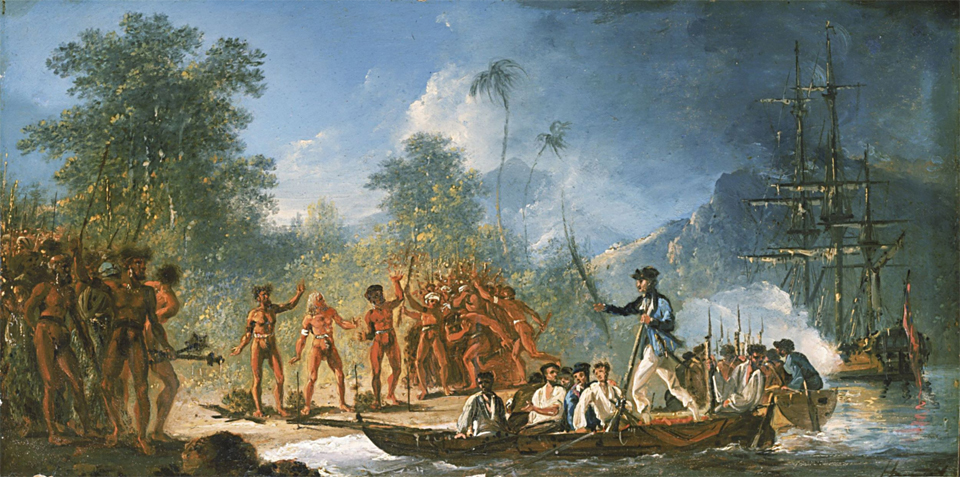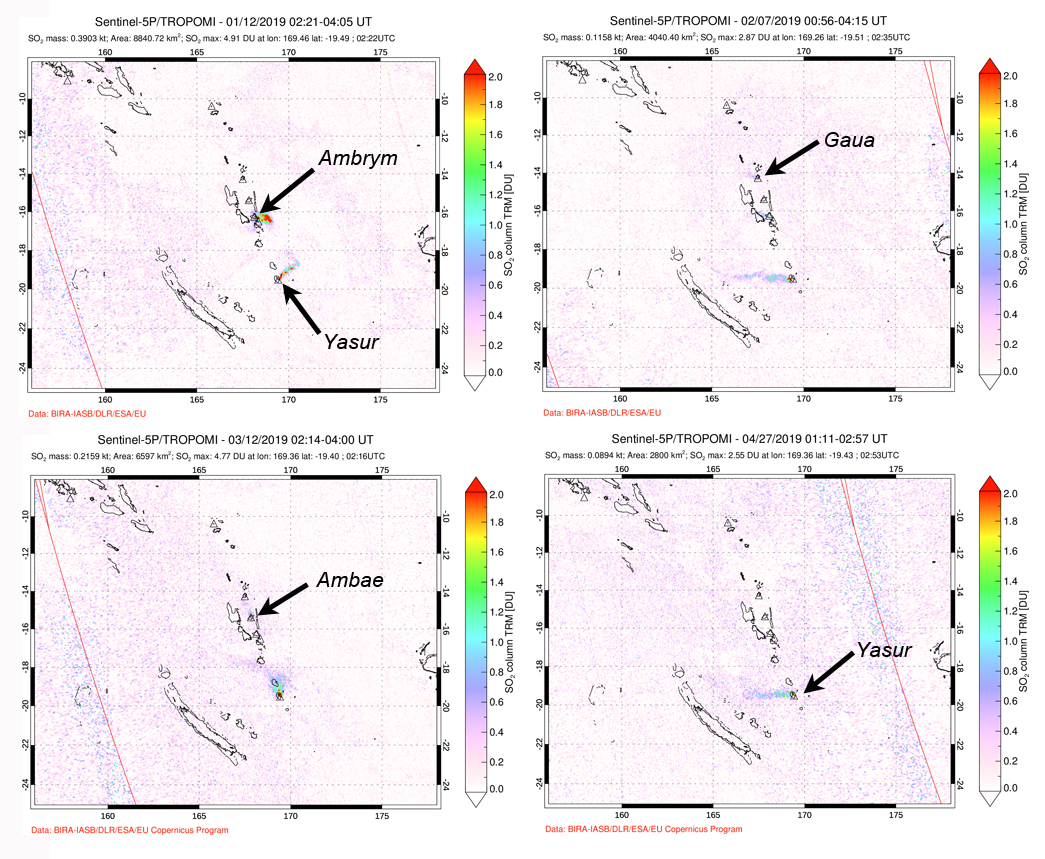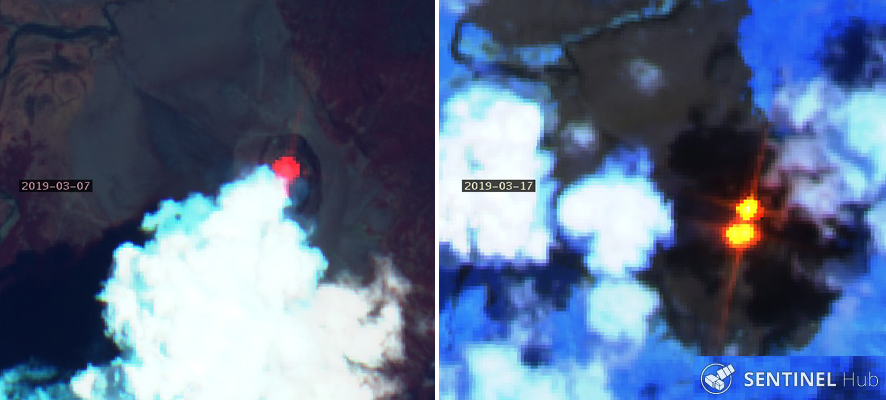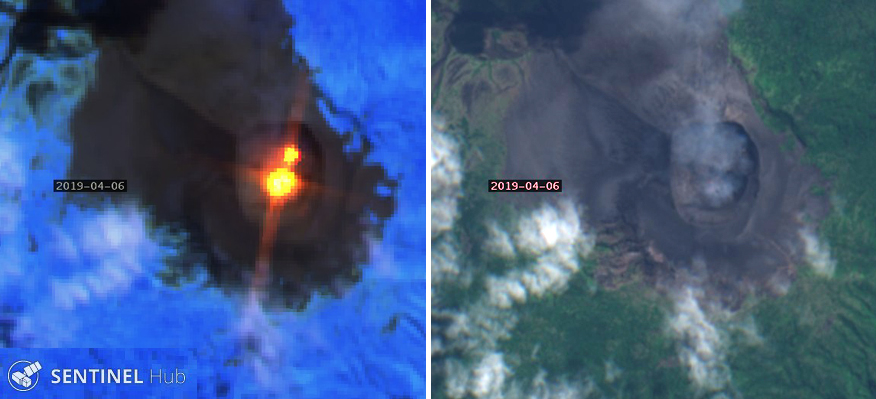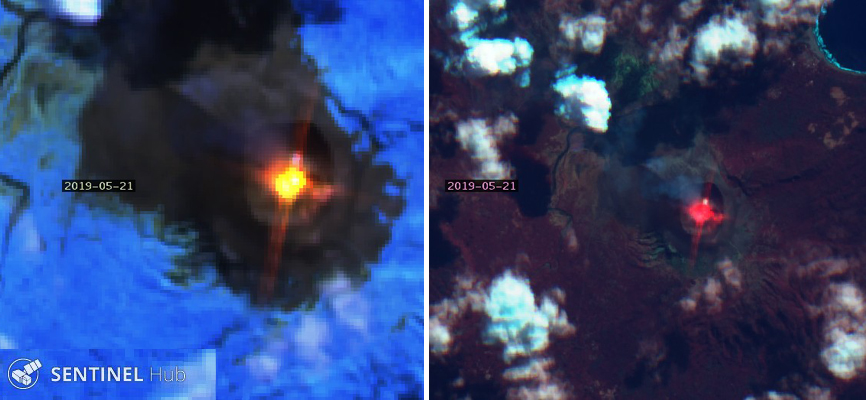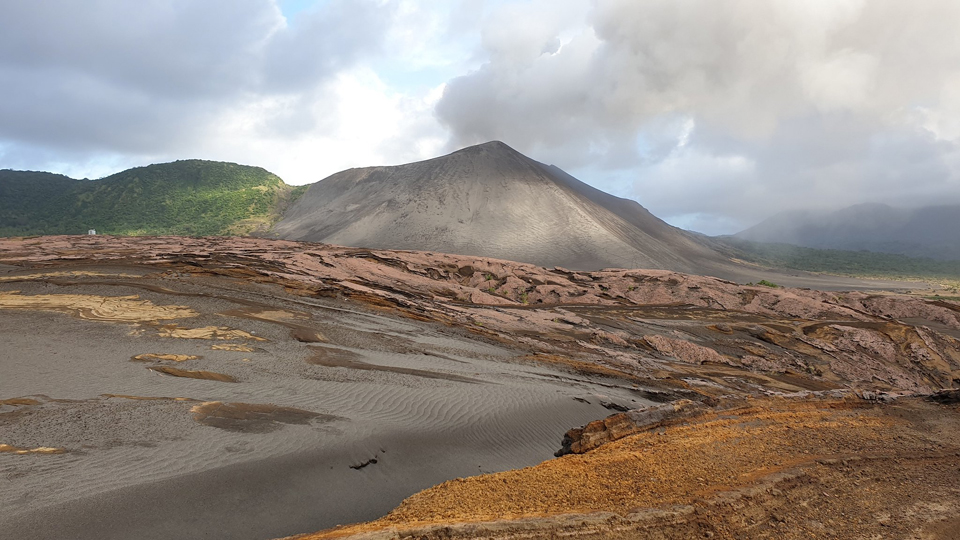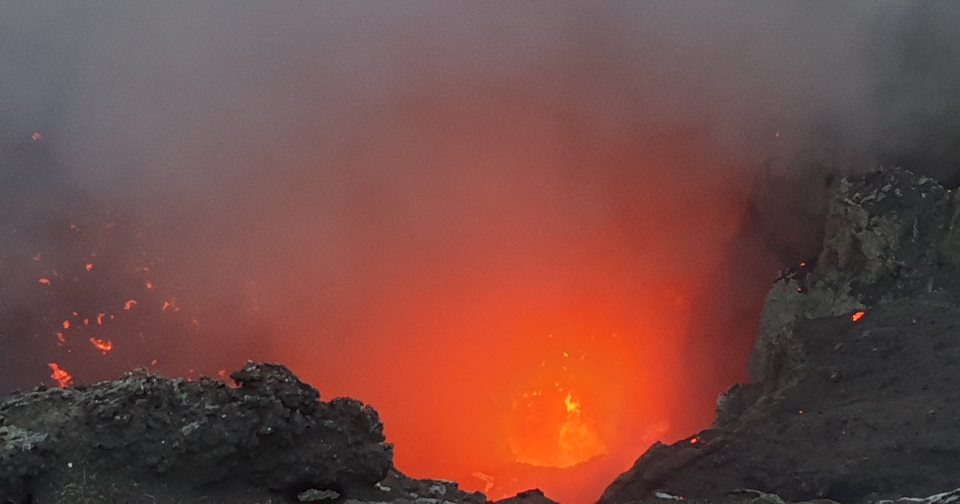Report on Yasur (Vanuatu) — June 2019
Bulletin of the Global Volcanism Network, vol. 44, no. 6 (June 2019)
Managing Editor: Edward Venzke.
Edited by A. Elizabeth Crafford.
Yasur (Vanuatu) Strong thermal activity with incandescent ejecta continues, February-May 2019
Please cite this report as:
Global Volcanism Program, 2019. Report on Yasur (Vanuatu) (Crafford, A.E., and Venzke, E., eds.). Bulletin of the Global Volcanism Network, 44:6. Smithsonian Institution. https://doi.org/10.5479/si.GVP.BGVN201906-257100
Yasur
Vanuatu
19.532°S, 169.447°E; summit elev. 361 m
All times are local (unless otherwise noted)
Yasur volcano on Tanna Island has been characterized by Strombolian activity with large incandescent bombs, frequent explosions, lava fountaining, and ash emissions for much of its known eruptive history. Melanesians from nearby islands are believed to have settled Tanna in about 400 BCE; it is now part of the nation of Vanuatu, independent since 1980. The Kwamera language (or Tannese) spoken on the SE coast of the island is thought to be the source of the name of the island. No known oral history describes volcanic activity; the first written English-language documentation of activity dates to 5 August 1774, when Captain James Cook saw "a great fire" on Tanna Island. Cook realized that it "was a Volcano which threw up vast quantities of fire and smoak and made a rumbling noise which was heard at a good distance" (The Captain Cook Society) (figure 51).
Based on numerous accounts from ships logs and other sources, volcanic activity has been continuous since that time. During periods of higher activity, multiple vents within the summit crater send ejecta 100 m or more above the crater rim, with large bombs occasionally landing hundreds of meters away. Continued activity during February-May 2019 is covered in this report with information provided by the Geo-Hazards Division, Vanuatu Meteorology and Geo-Hazards Department (VMGD) which monitors the volcano and satellite data; photographs from tourists also provide valuable information about this remote location.
VMGD has maintained Alert Level 2 at Yasur since October 2016, indicating that it is in a major state of unrest. There is a permanent exclusion zone within 395 m of the eruptive vents where access is prohibited due to multiple hazards, primarily from large incandescent bombs up to 4 m in diameter which have been ejected from the vents onto the crater rim in the past, resulting in fatalities (BGVN 20:08).
Satellite and ground based information all support high levels of thermal activity during February -May 2019. MODVOLC thermal alerts were issued 11 times in February, 27 times in March, and 20 times each in April and May. The MIROVA graph also indicated the ongoing consistently high levels of thermal energy throughout the period (figure 52). Plumes of SO2 emissions are common from Vanuatu's volcanoes; newer higher resolution data available beginning in 2019 reveal a persistent stream of SO2 from Yasur on a near-daily basis (figure 53).
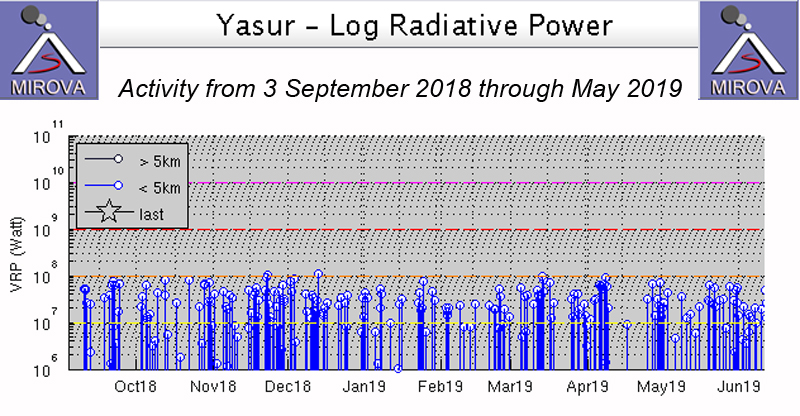 |
Figure 52. The MIROVA graph of thermal energy at Yasur from 3 September 2018 through May 2019 indicates the ongoing activity at the volcano. Courtesy of MIROVA. |
Satellite imagery confirmed that the heat sources from Yasur were vents within the summit crater of the pyroclastic cone. Both northern and southern vent areas were active. On 7 March 2019 the N vent area had a strong thermal signal. Ten days later, on 17 March, similar intensity thermal anomalies were present in both the N and S vent areas (figure 54). On 6 April the S vent area had a stronger signal, and gas emissions from both vents were drifting N (figure 55). Satellite imagery from 21 May 2019 indicated a strong thermal signal inside the crater in the area of the vents, and included a weaker signal clearly visible on the inside E crater rim. Strong Strombolian activity or spatter sending large incandescent bombs as far as the crater rim are a likely explanation for the signal (figure 56), underscoring the hazardous nature of approaching the crater rim.
Tourists visit Yasur on a regular basis. A former lake on the N side of Yasur has left ripples in the sand deposits over older volcanic rocks on the N side of the volcano (figure 57) since it drained in 2000 (BGVN 28:01). Visitors are allowed to approach the S rim of the crater where incandescence from both the N and S vents is usually visible (figure 58). Incandescent spatter from the convecting lava in the vents is highly dangerous and unpredictable and often covers the inner slopes of the rim as well as sending bombs outside the crater (figure 59).
Geological Summary. Yasur has exhibited essentially continuous Strombolian and Vulcanian activity at least since Captain Cook observed ash eruptions in 1774. This style of activity may have continued for the past 800 years. Located at the SE tip of Tanna Island in Vanuatu, this pyroclastic cone has a nearly circular, 400-m-wide summit crater. The active cone is largely contained within the small Yenkahe caldera, and is the youngest of a group of Holocene volcanic centers constructed over the down-dropped NE flank of the Pleistocene Tukosmeru volcano. The Yenkahe horst is located within the Siwi ring fracture, a 4-km-wide open feature associated with eruption of the andesitic Siwi pyroclastic sequence. Active tectonism along the Yenkahe horst accompanying eruptions has raised Port Resolution harbor more than 20 m during the past century.
Information Contacts: Geo-Hazards Division, Vanuatu Meteorology and Geo-Hazards Department (VMGD), Ministry of Climate Change Adaptation, Meteorology, Geo-Hazards, Energy, Environment and Disaster Management, Private Mail Bag 9054, Lini Highway, Port Vila, Vanuatu (URL: http://www.vmgd.gov.vu/, https://www.facebook.com/VanuatuGeohazardsObservatory/); Hawai'i Institute of Geophysics and Planetology (HIGP) MODVOLC Thermal Alerts System, School of Ocean and Earth Science and Technology (SOEST), Univ. of Hawai'i, 2525 Correa Road, Honolulu, HI 96822, USA (URL: http://modis.higp.hawaii.edu/); MIROVA (Middle InfraRed Observation of Volcanic Activity), a collaborative project between the Universities of Turin and Florence (Italy) supported by the Centre for Volcanic Risk of the Italian Civil Protection Department (URL: http://www.mirovaweb.it/); Sentinel Hub Playground (URL: https://www.sentinel-hub.com/explore/sentinel-playground); Global Sulfur Dioxide Monitoring Page, Atmospheric Chemistry and Dynamics Laboratory, NASA Goddard Space Flight Center (NASA/GSFC), 8800 Greenbelt Road, Goddard, Maryland, USA (URL: https://so2.gsfc.nasa.gov/); The Captain Cook Society (URL: https://www.captaincooksociety.com/home/detail/225-years-ago-july-september-1774); Royal Museums Greenwich (URL: https://collections.rmg.co.uk/collections/objects/13383.html); Wikimedia Commons, (URL: https://commons.wikimedia.org/wiki/File:The_Landing_at_Tana_one_of_the_New_Hebrides,_by_William_Hodges.jpg); Nick Page, Australia,Flickr: (URL: https://www.flickr.com/photos/152585166@N08/).


